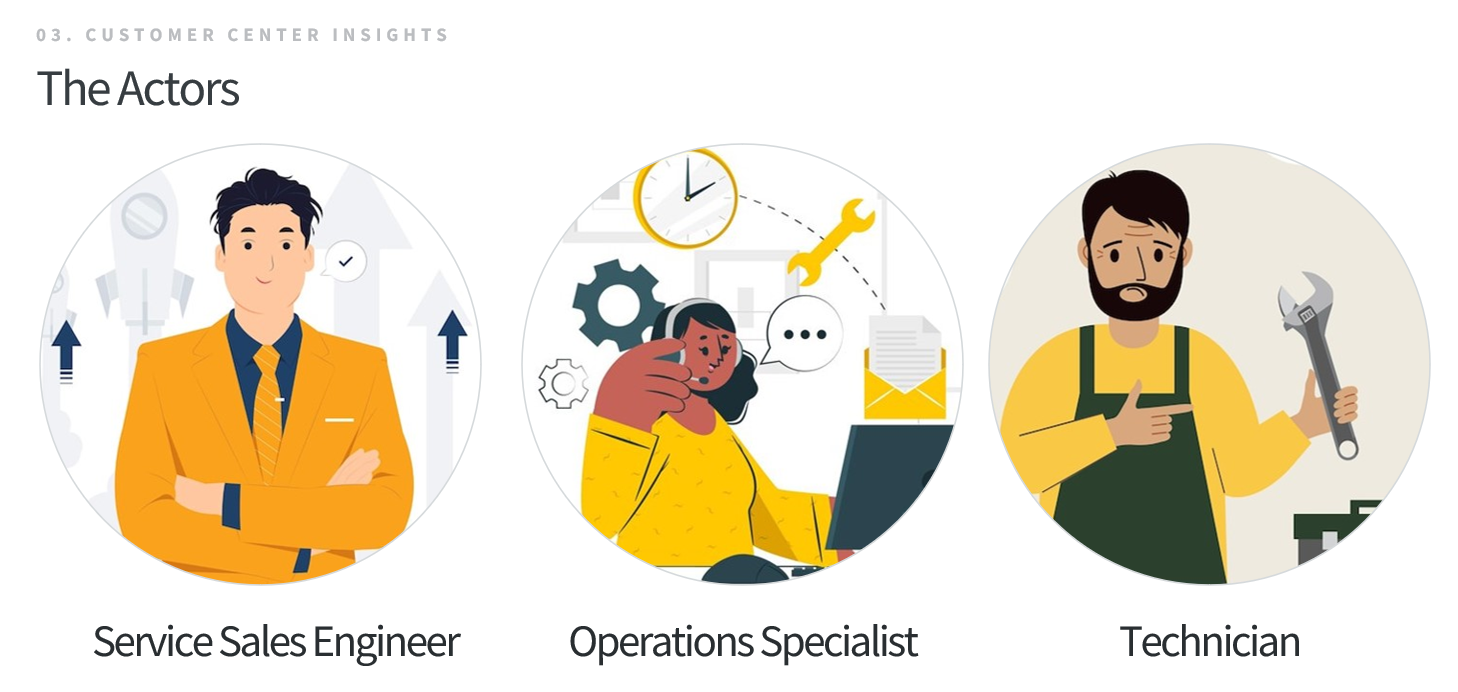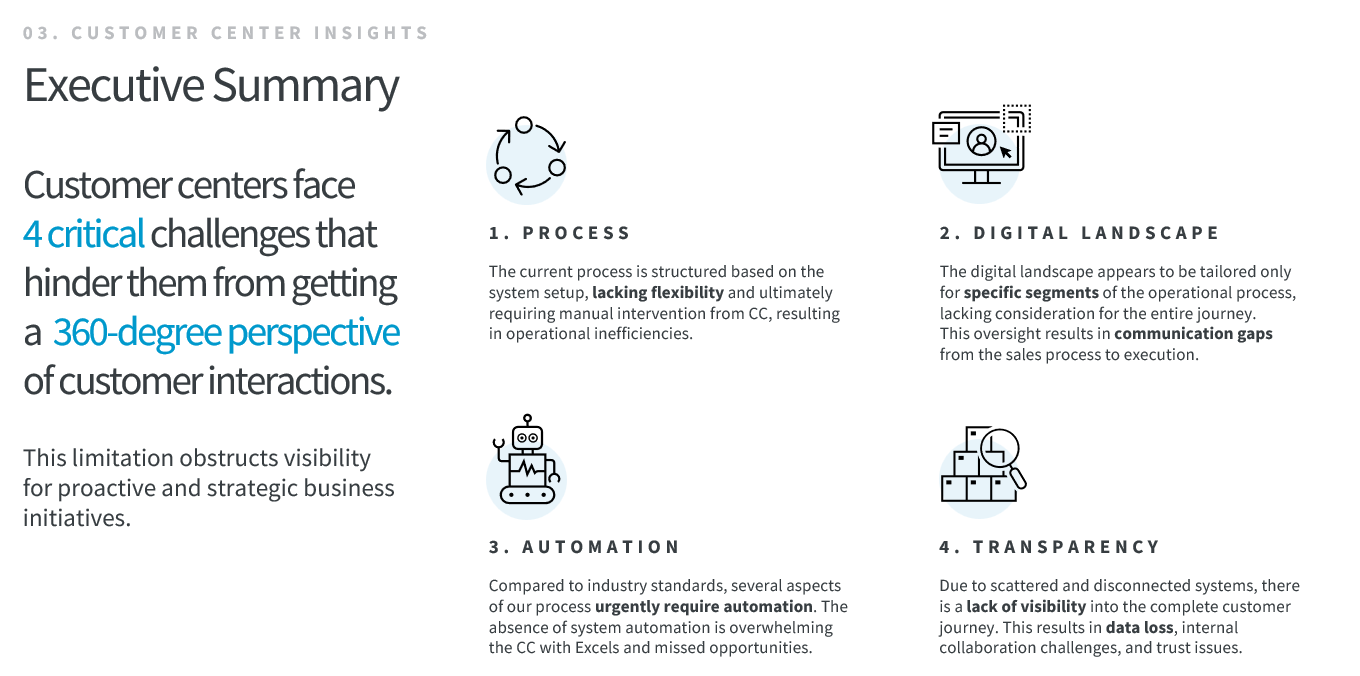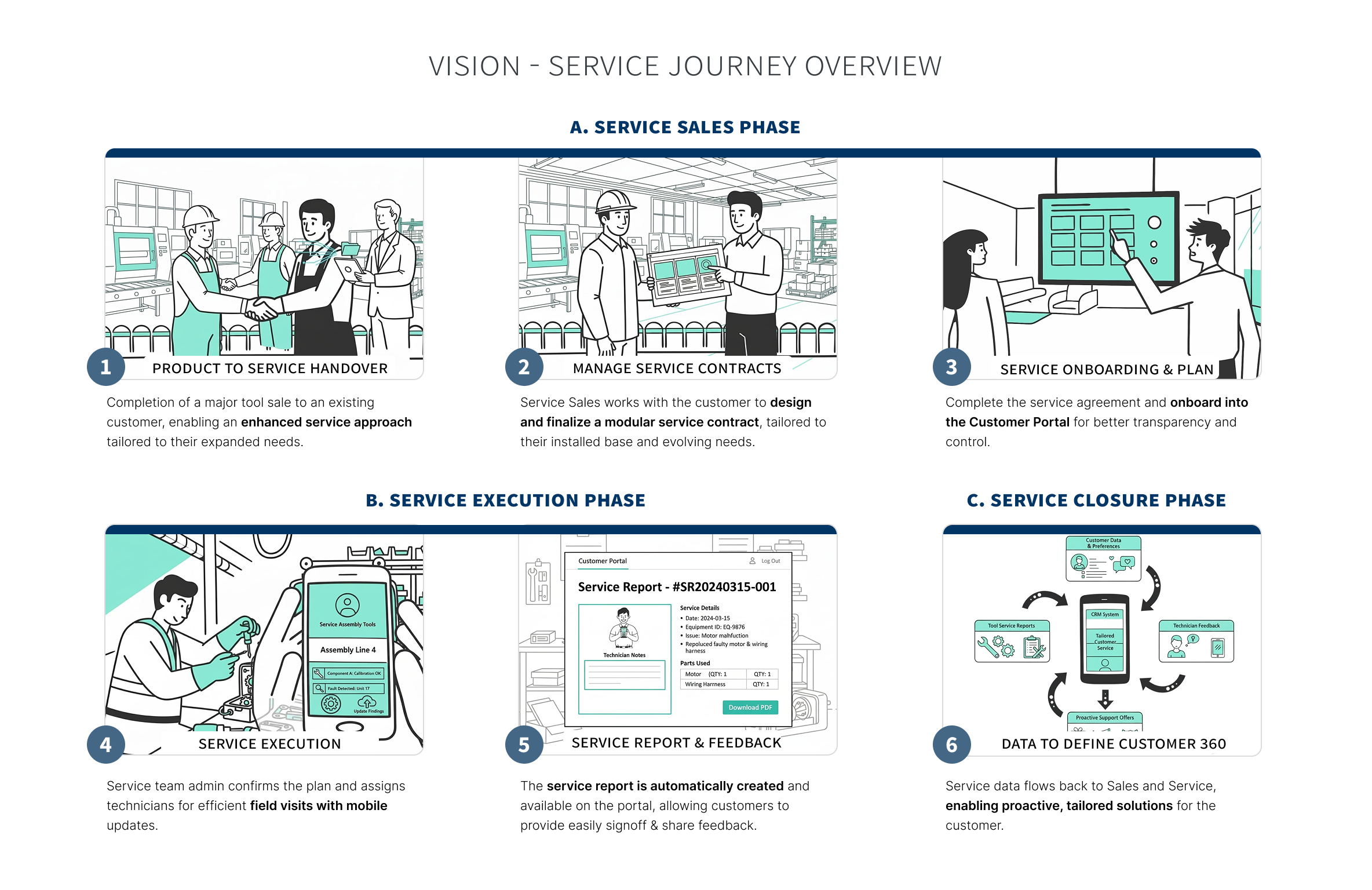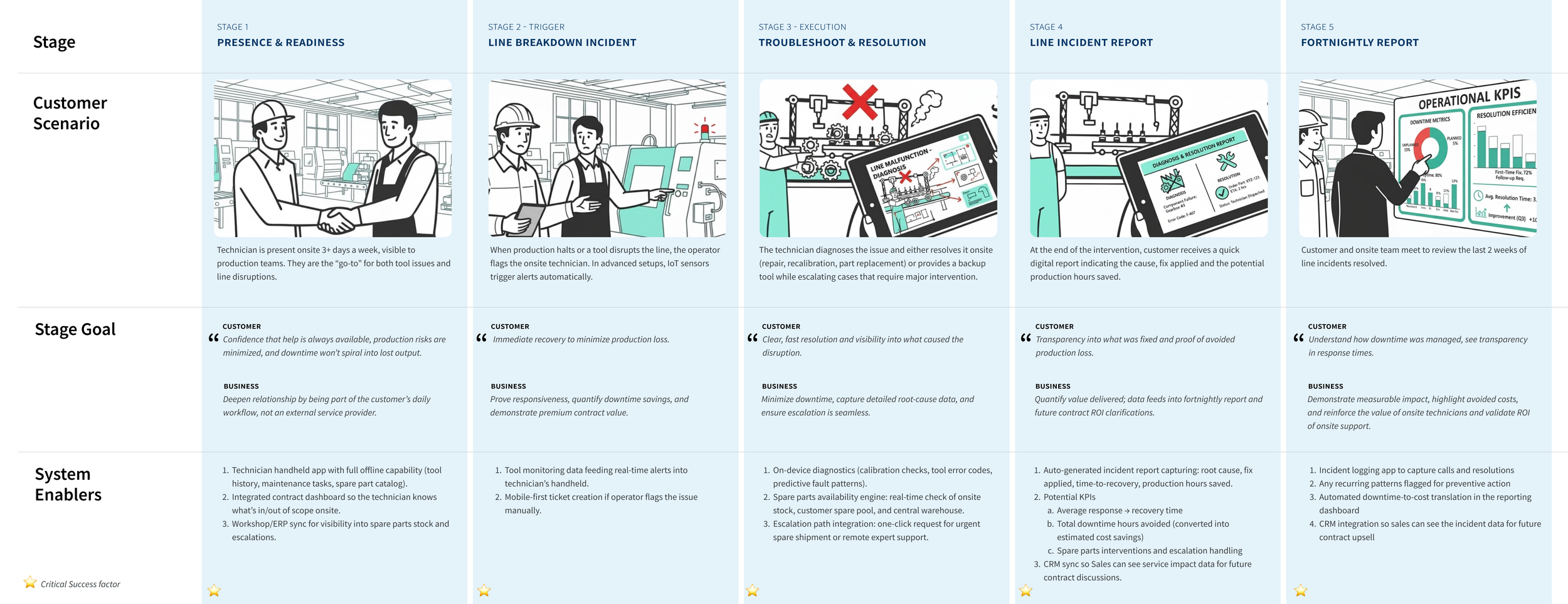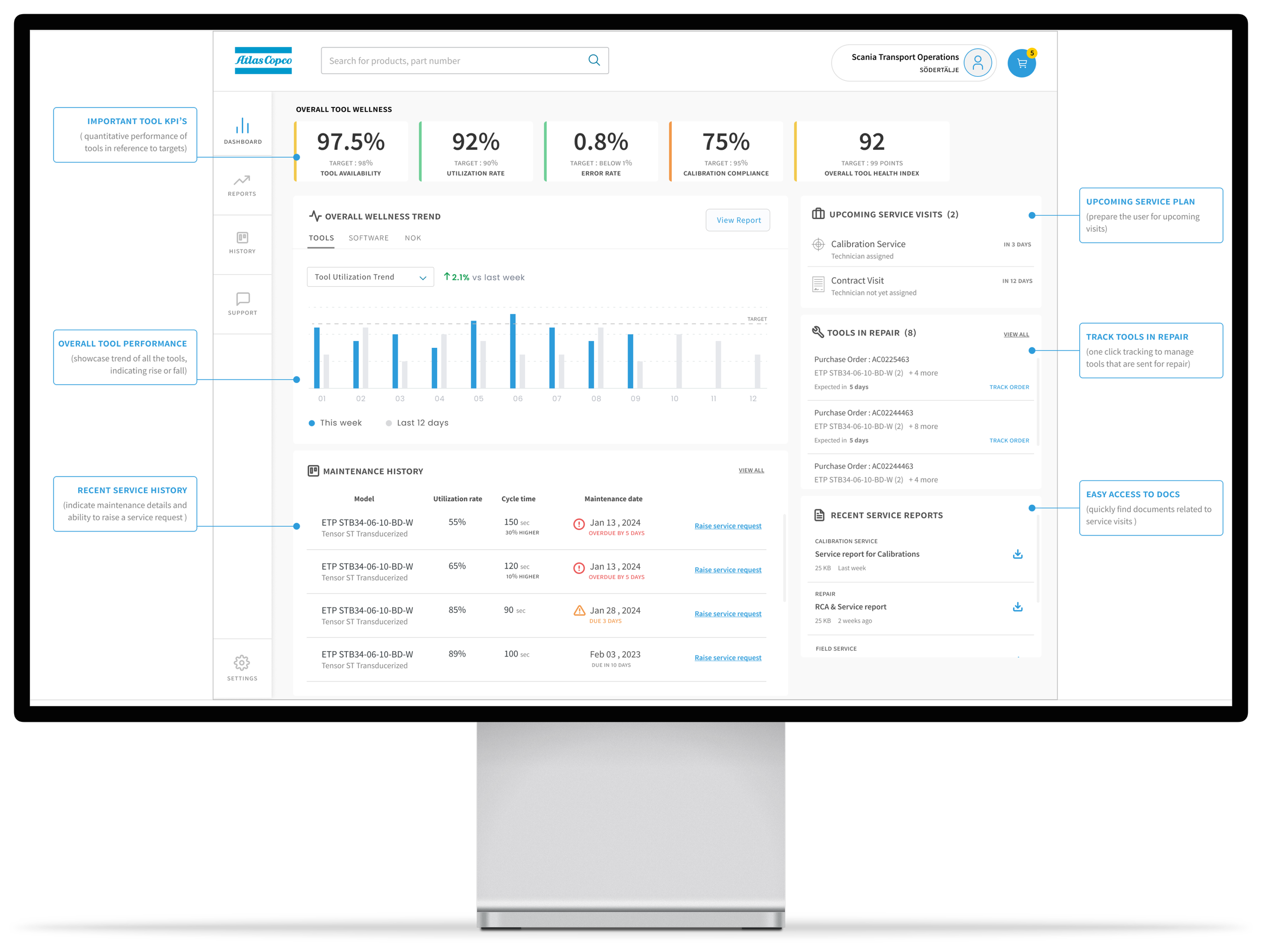
Aftermarket Journey Map
Atlas Copco, a Swedish multinational industrial company that manufactures industrial tools and equipment like drills, screwdrivers. This project focused on the overall service experience once a tool was sold, evaluating Customer Engagement & Retention
Overview
-
What..
A Business and Service Design initiative aimed at identifying and addressing key CX gaps across the Tool Service journey, analyzing physical and digital touchpoints from initiation to completion.
-
Why..
The global service process remains traditional and fragmented by excessive customization, limiting scalability. Reimagining the end-to-end flow is essential to enable faster turnaround times a key driver of customer experience.
-
How..
By uncovering the core customer needs and expectations, we could define the real problem, elevate business processes, and shape a digital landscape that truly supports the way the business operates.
The Business Problem
Early research showed that the challenges went beyond customer interactions and were rooted in how customer centers were enabled to deliver service.
The aftermarket process lacked structure and relied heavily on manual steps, with no standard approach to managing Service Level agreement, handing over to operations, or tracking execution accurately.
As a result, information was lost between stages, teams operated in silos, and customers had limited visibility and communication. This led to delays, inconsistent service, low transparency, and reduced employee engagement, ultimately impacting both customer experience and business performance.
The Design Approach
Define the business goal
Historically, business success was measured primarily by output, what was delivered, rather than by the quality of outcomes for our customer centers and, ultimately, our customers.
We redefined success by focusing on service excellence and experience, setting a clear north star metric - achieving a 5 day turnaround time to ensure faster, more consistent, and customer-centric delivery.
Service Design became a critical backbone of this digital transformation, ensuring that process improvements were seamlessly connected across every touchpoint, from frontstage interactions to backstage operations and back.
Customer Needs
Customers clearly indicated the 3 critical areas that form the foundation of Service customer experience.
Customer Center Needs
Customer centers face 4 critical challenges that hinder them from getting a 360-degree perspective of customer interactions.
Define the vision
➡️➡️
This process was presented to Senior Executives to provide strategic clarity on the end-to-end service delivery journey and identify opportunities to streamline interactions and improve customer experience.
Design Concept & Storyboard
Leadership was fully supportive of driving this transformation, but there was still uncertainty around what it would mean for our key users, internal teams and customers alike.
To bridge that gap, I created a design concept and storyboard that brought the vision to life, showing how the transformation would look and feel in practice.
We discovered that great customer experience isn’t just about touchpoints, it’s driven by how efficiently services are executed.
Modernizing legacy systems & workflows became essential to meet the five-day turnaround goal.
High level touchpoints
Service Sales Planning phase
Service Execution Phase
Service Closure activities
Design Vision - Sales Engineer
Design Vision - Service Technician
Design Vision - Customer Dashboard
Key learnings and takeaway
This transformation ambition serves as our north star, even achieving 10% of it would significantly elevate the customer experience.
Data and user behavior are becoming the backbone of customer interactions, enabling a more proactive service approach.
The key learning - empowered internal teams are the true foundation of customer trust and long-term relationships.



